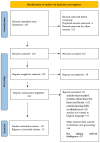Artificial Intelligence in Obstetric Anomaly Scan: Heart and Brain
- PMID: 38398675
- PMCID: PMC10890185
- DOI: 10.3390/life14020166
Artificial Intelligence in Obstetric Anomaly Scan: Heart and Brain
Abstract
Background: The ultrasound scan represents the first tool that obstetricians use in fetal evaluation, but sometimes, it can be limited by mobility or fetal position, excessive thickness of the maternal abdominal wall, or the presence of post-surgical scars on the maternal abdominal wall. Artificial intelligence (AI) has already been effectively used to measure biometric parameters, automatically recognize standard planes of fetal ultrasound evaluation, and for disease diagnosis, which helps conventional imaging methods. The usage of information, ultrasound scan images, and a machine learning program create an algorithm capable of assisting healthcare providers by reducing the workload, reducing the duration of the examination, and increasing the correct diagnosis capability. The recent remarkable expansion in the use of electronic medical records and diagnostic imaging coincides with the enormous success of machine learning algorithms in image identification tasks.
Objectives: We aim to review the most relevant studies based on deep learning in ultrasound anomaly scan evaluation of the most complex fetal systems (heart and brain), which enclose the most frequent anomalies.
Keywords: anomaly scan; artificial intelligence; deep learning; fetal brain; fetal heart; pregnancy; ultrasound.
Conflict of interest statement
The authors declare no conflicts of interest.
Figures






References
Publication types
LinkOut - more resources
Full Text Sources

